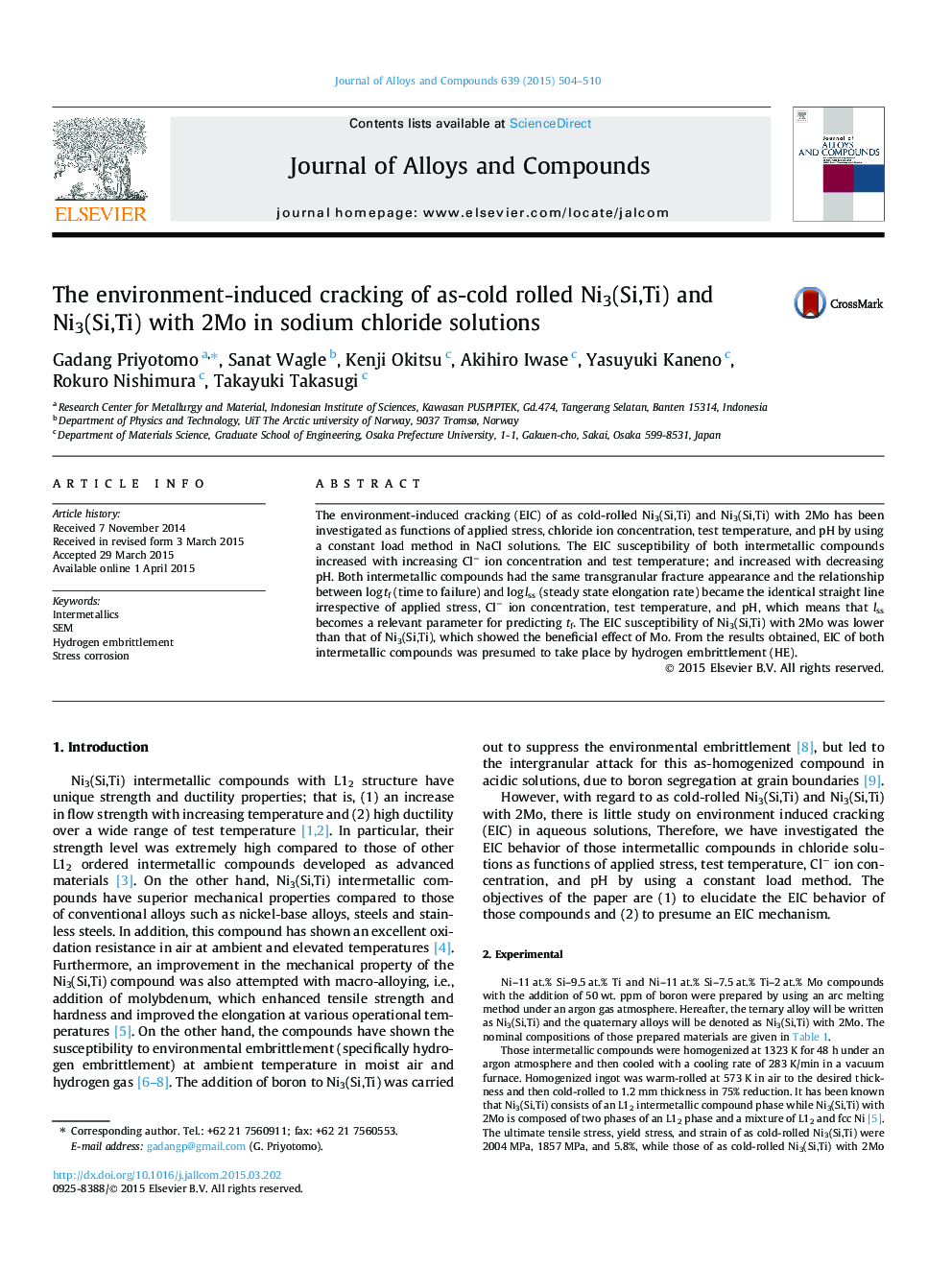| Article ID | Journal | Published Year | Pages | File Type |
|---|---|---|---|---|
| 7998979 | Journal of Alloys and Compounds | 2015 | 7 Pages |
Abstract
The environment-induced cracking (EIC) of as cold-rolled Ni3(Si,Ti) and Ni3(Si,Ti) with 2Mo has been investigated as functions of applied stress, chloride ion concentration, test temperature, and pH by using a constant load method in NaCl solutions. The EIC susceptibility of both intermetallic compounds increased with increasing Clâ ion concentration and test temperature; and increased with decreasing pH. Both intermetallic compounds had the same transgranular fracture appearance and the relationship between log tf (time to failure) and log lss (steady state elongation rate) became the identical straight line irrespective of applied stress, Clâ ion concentration, test temperature, and pH, which means that lss becomes a relevant parameter for predicting tf. The EIC susceptibility of Ni3(Si,Ti) with 2Mo was lower than that of Ni3(Si,Ti), which showed the beneficial effect of Mo. From the results obtained, EIC of both intermetallic compounds was presumed to take place by hydrogen embrittlement (HE).
Related Topics
Physical Sciences and Engineering
Materials Science
Metals and Alloys
Authors
Gadang Priyotomo, Sanat Wagle, Kenji Okitsu, Akihiro Iwase, Yasuyuki Kaneno, Rokuro Nishimura, Takayuki Takasugi,
